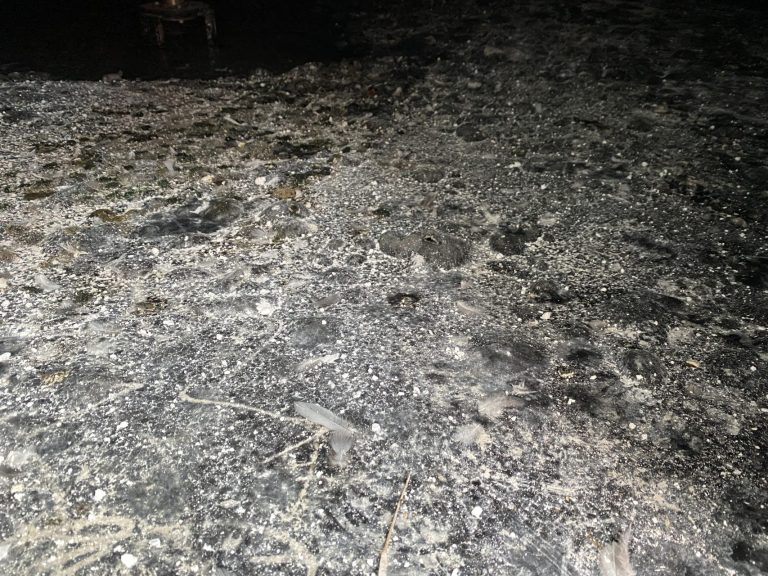THE PROBLEM
The existing polyurethane tank lining applied to the silo had started to fail. The silo contains an abrasive slurry that is agitated by the central mixer. The existing tank lining was exhibiting heavy blistering on the concrete tank base which were fluid filled suggesting osmosis as the causation.
SOLUTION
Because the silo already had a flexible polyurethane tank lining applied the only efficient way to remove this was by ultra high pressure water jetting. This will tear off a flexible lining, by contrast abrasive blasting will simply rebound off, making it mostly ineffective.
Once the existing tank lining had been removed by method of ultra high pressure water the steel was prepared to SA2.5 as per ISO8501-1 by method of abrasive blasting, with a minimum surface profile of 75 microns required. Ensuring sufficient surface profile is essential when applying tank linings as it is the roughness of the surface being coated that ensures the correct adhesion of the new tank lining. As part of our standard quality assurance this was tested and recorded using a surface profile needle gauge.
Once the spent abrasive blast media had been removed from the silo all surfaces were vacuumed clean and the cleanliness of the silo checked using a dust tape test. This again is of upmost importance as if a film of dust is still present the new tank lining will not adhere correctly.
Preventing the steel corroding
To prevent the steel corroding dehumidification equipment was installed and maintained. The tank lining we were applying is surface tolerant, however achieving a higher standard of surface preparation will extend the service life of the new tank lining.
The climatic conditions were tested and recorded as per our standard tank lining quality assurance.
To minimise the risk of osmotic blistering occurring on the tank floor this was double primed using a damp tolerant epoxy primer that forms a liquid damp proof membrane.
Sealing the seams
All seams were sealed using a polyurethane jointing compound and all joins and bolts received a heavy stripe coat of Corroless ACO applied by method of brush and roller. Stripe coating is an essential stage of the tank relining process as it ensures full tank lining thickness in areas where coatings pull thin through gravity and surface tension.
Following cure of the stripe coat Corroless ACO spray grade was applied by method of heated plural spray. Corroless ACO when spray applied has a short gel time and is effectively applied ‘wet on wet’ in a single application. The fast cure time of this tank lining material allows a rapid return to service. Corroless ACO is a flexible tank lining polyurethane that is typically applied to a thickness of 1mm or greater.
The applied tank lining was checked for pin holing using a DC holiday spark tester and dry film thickness readings taken and recorded. Any pin holes or areas below thickness were marked with chalk.
All areas marked were then made coat within the recoating window using Corroless ACO brush grade. The beauty of the Corroless ACO tank lining system is that it is available in both brush grade and spray grade, both of which are desirable for a successful tank lining installation.
This was a brilliant tank lining project, effectively demonstrating the versatility of a two stage preparation regime when removing high build and elastomeric tank linings.













